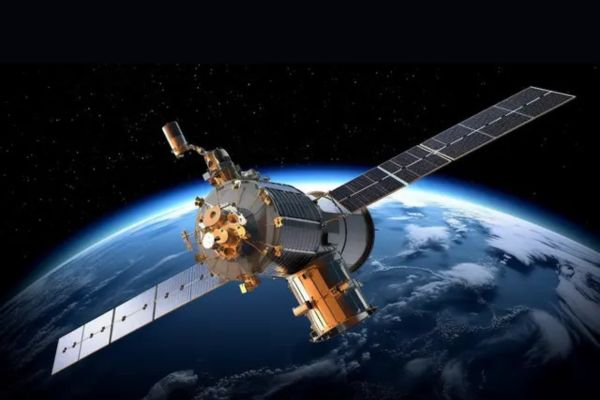The global satellite data services market size is evaluated at USD 14.15 billion in 2025 and is predicted to surpass around USD 55.24 billion by 2034, at a CAGR of 16.34% from 2025 to 2034.This surge is largely driven by falling satellite launch costs, rising data consumption across sectors, and the expanding applicability of geospatial intelligence. For B2B enterprises, this growth signals vast opportunities for operational optimization, strategic planning, and market differentiation.
In today’s digital-first economy, data has become a vital currency of decision-making. Among the most powerful and underutilized sources of big data is satellite data. Once the exclusive domain of governments and defense agencies, satellite data services are now reshaping how businesses across agriculture, energy, insurance, logistics, and finance operate. The integration of geospatial intelligence into enterprise strategies is driving a global surge in demand, establishing the satellite data services market as a cornerstone of the intelligent business era.
How Satellite Data Services Work
Satellite data is captured using a variety of sensors, optical, radar, infrared, and microwave, mounted on satellites orbiting Earth. These sensors collect vast quantities of raw data, including imagery, temperature readings, land surface changes, and electromagnetic radiation across multiple spectra. Once transmitted to ground stations, this raw data undergoes extensive processing and is converted into usable formats such as georeferenced images, time series datasets, or anomaly detection reports. The final output can be accessed via platforms or APIs, empowering businesses to derive actionable insights in near real-time.
Key Market Drivers
Several factors are accelerating the growth of satellite data services. First, miniaturization of satellite hardware has enabled the launch of low Earth orbit (LEO) constellations that offer high-frequency imaging at a fraction of the cost. Second, cloud-based analytics platforms are making satellite data more accessible and actionable for non-technical users. Third, government policies supporting Earth observation programs and commercial data use are opening new market frontiers. In particular, sectors like environmental monitoring, disaster management, and smart city planning are becoming major demand centers for high-resolution, time-sensitive data.
Regional Trends and Adoption Patterns
Globally, satellite data adoption is gaining momentum, but growth rates vary by region. North America dominated the global market with the largest market share of 37% in 2024. North America continues to lead, driven by defense spending, agri-tech adoption, and a robust private space sector. Europe is catching up, supported by government-backed programs like Copernicus and a strong focus on environmental monitoring. However, the fastest growth is expected in the Asia-Pacific region, with countries like India and China investing heavily in Earth observation capabilities for agriculture, urban development, and disaster resilience. The region is projected to grow at a CAGR exceeding 19% between 2025 and 2030, reflecting the increasing reliance on geospatial intelligence in emerging economies.
AI-Powered Satellite Data Analytics
Artificial Intelligence is revolutionizing satellite data services. Machine learning algorithms, particularly convolutional neural networks (CNNs), are being used to detect patterns, classify land cover, and even identify economic activity such as vehicle movement at retail outlets or construction at industrial sites. According to recent studies, AI can improve satellite image processing efficiency by up to 70%, drastically reducing the time from data acquisition to insight delivery. Around 65% of satellite data providers now embed AI capabilities in their platforms, and the AI-in-satellite market itself is projected to reach $7.5 billion by 2027. For businesses, this means faster, more accurate, and more cost-effective geospatial intelligence.
Satellite Data vs. Remote Sensing
It’s important to distinguish satellite data services from the broader domain of remote sensing. While remote sensing encompasses data collected by drones, aircraft, and ground-based systems, satellite data refers specifically to Earth observation from space. Satellite data has the advantage of covering large geographic areas with high consistency and regular revisit times, making it highly scalable and ideal for longitudinal studies and multi-location monitoring.
Geospatial Intelligence (GEOINT): A Strategic Enabler
Geospatial Intelligence, commonly referred to as GEOINT, is the culmination of satellite data analysis, cartographic visualization, and predictive modeling. Initially developed for military reconnaissance, GEOINT has found commercial application in infrastructure development, environmental impact assessment, emergency management, and competitive market intelligence. For B2B organizations, GEOINT serves as a strategic enabler, offering spatial context to business decisions that would otherwise be based solely on traditional data models.
Use Cases Across Industries
Satellite data is being deployed across a growing list of industries, each leveraging it for unique B2B applications. In agriculture, satellite imagery is used for precision farming, tracking crop health, soil conditions, and weather impacts. In oil and gas, it supports pipeline monitoring, offshore drilling surveillance, and exploration planning. Retail and real estate firms use satellite data for site selection, tracking consumer traffic patterns, and assessing urban development. The finance industry uses satellite data to inform commodity trading strategies, monitor economic activity, and assess environmental, social, and governance (ESG) compliance. Meanwhile, insurance companies utilize satellite imagery to verify property claims and assess risk exposure.
Major Players and Competitive Landscape
Several key players dominate the satellite data services market. Maxar Technologies leads in high-resolution Earth imagery, particularly for defense and mapping. Planet Labs, with its daily imaging of the Earth’s landmass, serves sectors like agriculture and forestry. Airbus Defence and Space offers a blend of optical and radar data with advanced analytics. Other notable firms include BlackSky, ICEYE, and Spire Global, each specializing in niche segments such as real-time monitoring, synthetic aperture radar (SAR) data, and maritime intelligence. As competition intensifies, these companies are investing heavily in analytics, cloud integration, and AI capabilities to offer end-to-end geospatial solutions.
Satellite Data Services Market Key Players
- Maxar Technologies Holdings Inc. (Maxar)
- Planet Labs PBC.
- Airbus SE
- ICEYE
- L3Harris Technologies, Inc.
- Earth-i Ltd
- Geocento Limited
- NV5 Global, Inc.
- Satellite Imaging Corporation
- Satpalda
- Telstra
- Ursa Space Systems Inc.
- Geospatial Intelligence Pty Ltd
Recent Mergers & Acquisitions
Strategic consolidation is a notable trend in this market. In 2025, SES acquired Intelsat in a $3.1 billion deal, aimed at strengthening its satellite internet services and geospatial capabilities. Similarly, Planet Labs acquired Sinergise, a cloud-based satellite data platform, to enhance delivery speed and analytical depth. These M&A activities are enabling players to offer more vertically integrated solutions—combining satellite manufacturing, data acquisition, AI processing, and application delivery within a unified ecosystem.
Cost and ROI Considerations
Cost remains a critical factor for B2B adoption. High-resolution satellite data can cost anywhere between $10 and $500 per square kilometer, depending on resolution, frequency, and licensing models. While this may seem steep, the ROI for businesses is substantial. Case studies show that enterprises using satellite data report 30–40% improvements in operational efficiency, 20–25% cost reductions, and significant improvements in risk management and forecasting accuracy. Additionally, subscription models and SaaS-based platforms are helping companies amortize the cost over broader operational gains.
Limitations and Technical Challenges
Despite its advantages, satellite data is not without limitations. Cloud cover can obscure optical sensors, affecting data quality, especially in tropical and polar regions. The latency between data capture and delivery may hinder time-sensitive applications like real-time disaster monitoring. Additionally, resolution trade-offs often arise between spatial detail and temporal frequency, businesses must prioritize what’s more critical for their specific use case. There’s also a skills gap in many organizations when it comes to interpreting and integrating satellite data, which may require investment in training or partnerships with analytics providers.
The Road Ahead
Looking forward, the satellite data services market is set to become even more integrated into enterprise ecosystems. Developments in 5G connectivity, edge computing, and cloud-native platforms will reduce latency and make data delivery more seamless. The growing use of satellite-as-a-service (SataaS) models will democratize access, allowing even SMEs to harness the power of space-based intelligence. Moreover, advances in quantum sensing and hyperspectral imaging are expected to unlock new possibilities in chemical detection, mineral mapping, and environmental diagnostics.


















